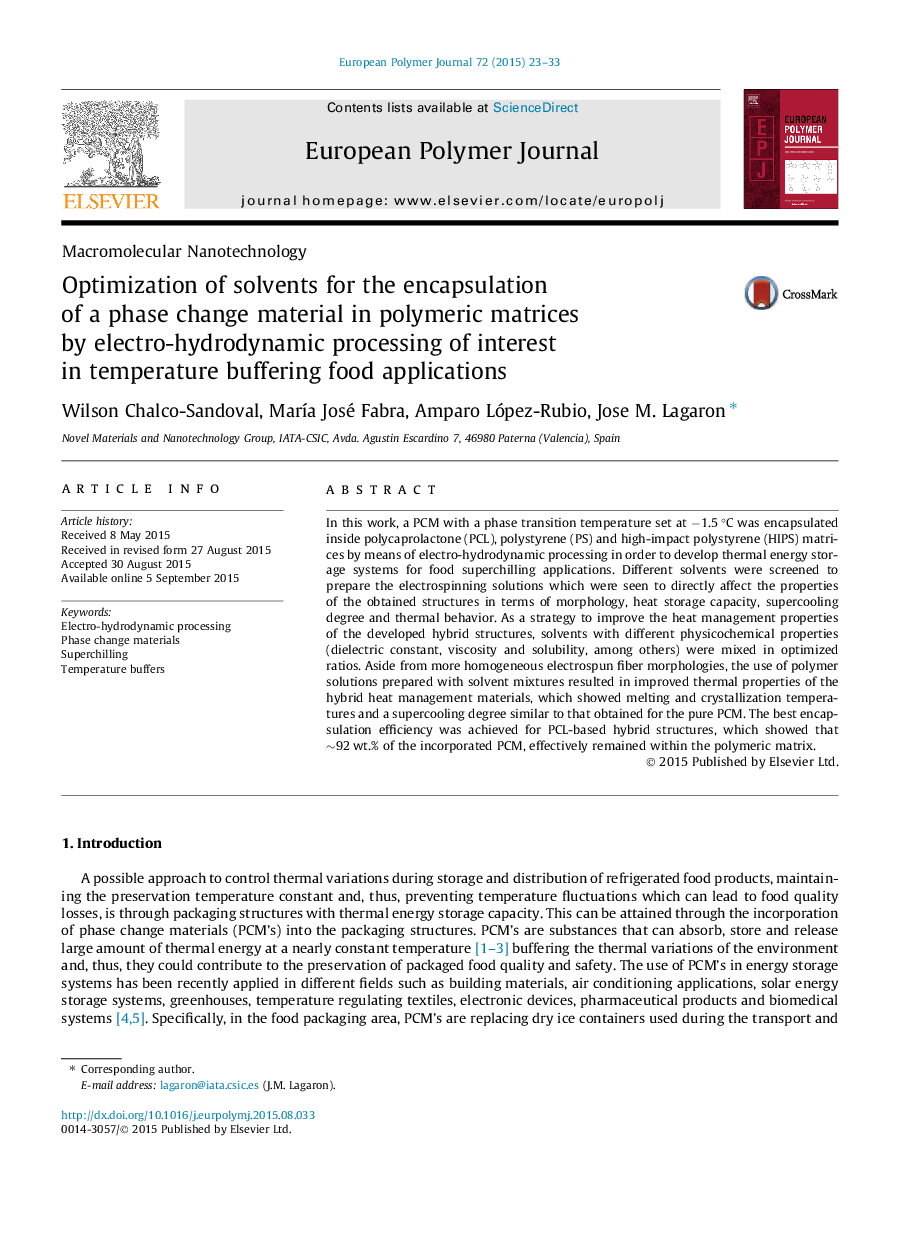| کد مقاله | کد نشریه | سال انتشار | مقاله انگلیسی | نسخه تمام متن |
|---|---|---|---|---|
| 1394708 | 1501363 | 2015 | 11 صفحه PDF | دانلود رایگان |
• A phase change material with a transition temperature set at −1.5 °C was encapsulated.
• The PCM was encapsulated by means of electro-hydrodynamic processing.
• The PCL matrix was able to encapsulate higher amounts of PCM than PS and HIPS.
In this work, a PCM with a phase transition temperature set at −1.5 °C was encapsulated inside polycaprolactone (PCL), polystyrene (PS) and high-impact polystyrene (HIPS) matrices by means of electro-hydrodynamic processing in order to develop thermal energy storage systems for food superchilling applications. Different solvents were screened to prepare the electrospinning solutions which were seen to directly affect the properties of the obtained structures in terms of morphology, heat storage capacity, supercooling degree and thermal behavior. As a strategy to improve the heat management properties of the developed hybrid structures, solvents with different physicochemical properties (dielectric constant, viscosity and solubility, among others) were mixed in optimized ratios. Aside from more homogeneous electrospun fiber morphologies, the use of polymer solutions prepared with solvent mixtures resulted in improved thermal properties of the hybrid heat management materials, which showed melting and crystallization temperatures and a supercooling degree similar to that obtained for the pure PCM. The best encapsulation efficiency was achieved for PCL-based hybrid structures, which showed that ∼92 wt.% of the incorporated PCM, effectively remained within the polymeric matrix.
Figure optionsDownload as PowerPoint slide
Journal: European Polymer Journal - Volume 72, November 2015, Pages 23–33
